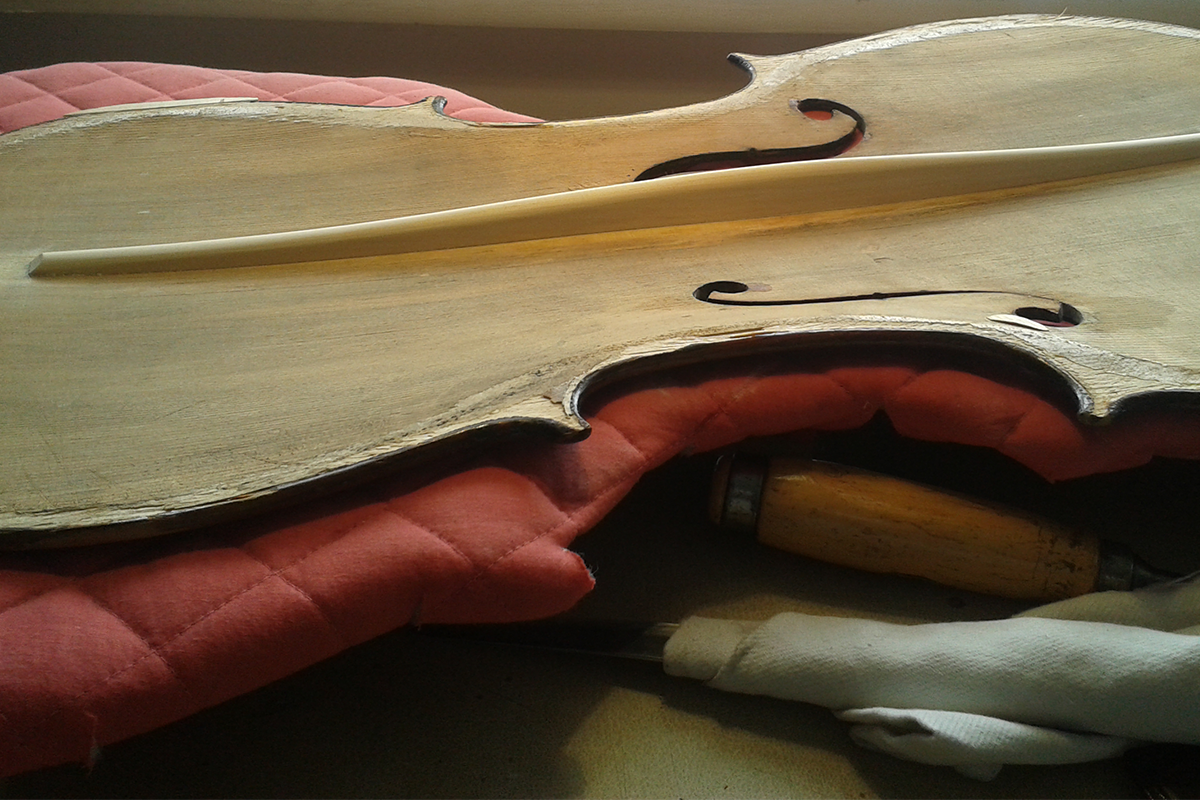Cellos are so very important to me. I have probably worked on more cellos than violins and violas put together. I have an indescribable passion for them. They just warm my heart.
I understand how they function and what makes them tick. I have transformed so many through restoration and tonal improvement. I can find no reason not to work on these beautiful instruments and yet I know restorers who are fearful of cellos because of their size and complex needs. From small gluing jobs to taking a front off to restore internal issues, is so exciting to me.

Setting up cellos and a strong cup of tea. Two of my favourite things in the workshop!

Looking inside this cello with a mirror reveals a small patch inserted at the area the soundpost sits, and immediately explains why this cello is not reaching its full tonal potential.
The beauty of their proportions, the patina of their varnish, makes me want the best for them. The mathematical complexities of their set-up (bridge and soundpost) I understand and execute.
As well as their restoration I specialise in tonal quality. Many makers and restorers can only focus on the woodwork and the varnish. For me a cello has to ‘sound’. I can see by your set up if the instrument is not functioning to its full potential before I even hear it. I know how to improve the sound quality and offer your instrument the chance to play at its absolute optimum. If your instrument isn’t performing at its best, how can you?
When cellos are exposed to different temperatures, climates, and humidity changes occur. The wood is influenced by its surroundings, even staying in the UK from summer to winter. Cracks can appear, sound may dull. When an instrument is badly damaged it’s obvious you must bring it to me. Having a free annual consultation will allow me to offer piece of mind that these smaller issues are under control too.
Please get in touch to discuss your cellos needs.
I also help and advise on insurance claims where appropriate.

The woodworm obviously loved this bassbar to bits! And no other flight holes were seen on the entire instrument, inside or out, which leads me to believe the eggs had been lain exclusively on the wood used for the bassbar.

I have replaced the nibbled bassbar with a beautiful new cello bassbar which not only looks great but will now allow the cello to ‘sound’. Of course the whole instrument was fumigated before work started.

Cello restoration can be challenging and having a strategy is key. Spending time working out exactly how to address major issues like the damage on this cello front will make for a successful job.

Planning is key with complex work and decisions are made as to which cracks will be glued first. As the pieces are reconstructed the dry runs are extremely important to ensure all cracks align perfectly. Long cracks cannot be glued in one go and need to be divided into sections and glued in stages. Warming the wood with a hair dryer keeps the glue, once applied, active for a few more seconds enabling a perfect joint to be formed.

When a cello that is ready for set up has had a complex restoration I allow it time to sit under full tension. This allows the plates, ribs and neck to feel and accept the tension once again in preparation for its hard working life ahead.
